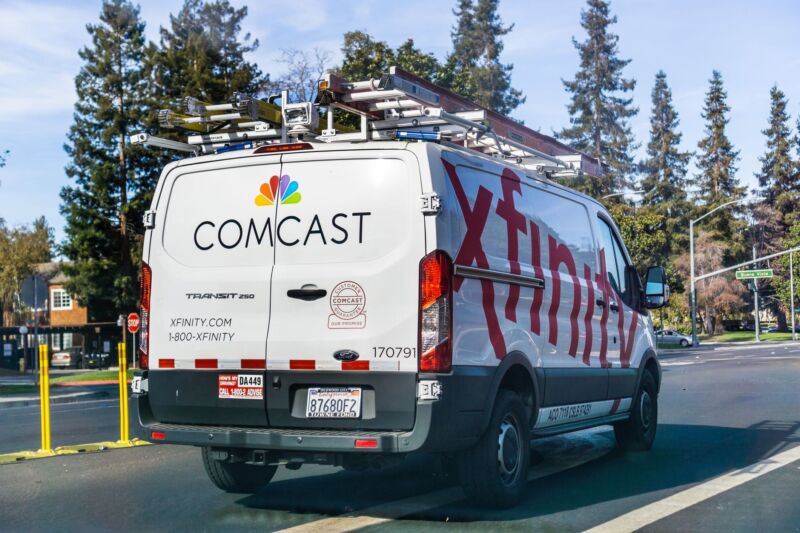
Comcast has a problem—it isn't signing up many new broadband customers. But Comcast also has a solution—get more money from existing subscribers.
Comcast failed to add any broadband customers in Q2 2022, holding steady at 32,163,000 residential and business Internet customers combined. In its Q3 earnings report released yesterday, Comcast said it gained only 14,000 broadband users in the latest quarter. Comcast also lost 561,000 video customers and 316,000 VoIP phone customers.
That's why Comcast executives focused on ARPU (average revenue per user) in an earnings call yesterday. With new customers few and far between, Comcast is aiming for growth in the average amount each existing customer pays.
"We expect ARPU growth will continue to be the primary driver of our residential broadband revenue growth in the near term," Comcast President and CFO Michael Cavanagh said.
Comcast could get more customers by expanding into new territory or by connecting homes in neighborhoods where some people are stuck without broadband even though their neighbors have Comcast Internet service. But Comcast seems content to stick with its current territory and often refuses to provide new hookups unless homeowners pay tens of thousands of dollars upfront—or even $210,000, as described in one of our recent stories.
CEO doesn’t expect much subscriber growth
Comcast CEO Brian Roberts said the nation's largest cable company is "still in a challenging environment in terms of depressed move activity and increased competition from new entrants." Robert said there are four primary drivers of growth in Comcast's cable division: "residential broadband units, residential broadband ARPU, wireless, and business services."
"While we don't anticipate residential broadband units to be a significant driver for now, we expect to maintain healthy growth in the other three, leading to continued strong financial performance at cable for the foreseeable future," Roberts said. Cavanagh said that "broadband revenue increased 5.7 percent driven by growth in ARPU and in our customer base compared to last year. Broadband ARPU increased 3.7 percent year over year, consistent with the growth rate in the second quarter."
Comcast also discussed ARPU growth in its earnings call three months ago, suggesting that price increases helped boost per-user revenue in Q2. "In broadband alone, we had really healthy ARPU growth, 3.6 percent, half being rate-driven, the other half just how we manage tier mix," Comcast cable division CEO David Watson said at the time.
Meanwhile, Roberts emphasized yesterday that Comcast is "returning a substantial amount of capital to our shareholders. We pay nearly $5 billion in dividends per year, and we bought back $9.5 billion of our shares year-to-date through the third quarter."
Broadband revenue
Broadband revenue was $6.135 billion during the three-month period. That amounts to about $63.55 monthly per subscriber, but includes both business and residential accounts. The Q3 2022 broadband revenue is up from $6.107 billion in Q2 2022, and up from $5.8 billion since Q3 2021.
Comcast has multiple ways of getting more money from existing subscribers. That includes selling mobile plans—Comcast added 333,000 wireless lines in the quarter, hitting 4.95 million wireless lines in total. Wireless revenue increased 30.8 percent, reaching $789 million. Comcast also sells home security services.
But the Roberts and Cavanagh statements referred specifically to "broadband ARPU," suggesting they want to keep raising broadband bills. That could include increases to basic monthly rates, boosts to fees that raise the cost above advertised prices, or requiring subscribers to purchase the $25-per-month xFi Complete add-on in order to get unlimited data and higher upload speeds.
reader comments
263